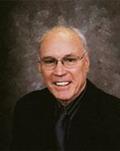Sorting out the advertising claims of pharmaceutical companies and evaluating the efficiency of medication can be difficult.

Dr. Philip Hoffsten, an retired internist and medical school professor, offered some answers Monday in a presentation to The Villages Civil Discourse Club at the Savannah Center.
Although it may seem like companies make outlandish claims for their drugs, Hoffsten said their advertising is closely regulated. The United States is one of only three countries that allow advertising of prescription drugs.
In 2010, pharmaceutical companies spent $29 billion on advertising and drug ads often outnumber car ads on prime time television.
“They are not supposed to make claims that are not on the package insert,” he said. “The public has the impression there’s very little regulation.”
Beginning in 1992, the U.S. Food and Drug Administration required the listing of all of a drug’s effects. The FDA has fined several companies billions for false advertising claims, said Hoffsten, who practiced in Pierre, S.D., and taught in the medical school at Washington University in St. Louis.
The government enacted the first drug regulation law in 1906, banning the sale of rancid meat and harmful drugs. Regulation was stepped up in 1938 when an antibiotic mixed with ethylene glycol (antifreeze) caused 100 deaths from kidney failure.
Hoffsten said the amount of money drug companies are allowed to spend to convince doctors to use their products also has been reduced. He recalled flying to California in the 1980s at a drug company’s expense.
“I knew full well that I was getting a secret message to buy the drug,” he said.
The effectiveness of preventative drugs is measured in the number of patients needed to treat to save a life or prevent the disease.
With the shingles vaccine, for example, Hoffsten said that number is one in 10 patients, which means the vaccine is effective.
“It also reduces the severity, but by no means is shingles totally prevented,” he said.
The number of patients needed to treat for a pneumonia vaccine, on the other hand, is one in 900,000 patients, making the vaccine largely ineffective, Hoffsten said. Part of the reason is that only about a third of all pneumonia cases are affected by the vaccine.
Prescription drug costs often make no sense, he said.
A drug that can extend a lung cancer patient’s life by four months, for example, costs $143,000. Doxycyclene, a drug for treating acne, used to cost $4 for a month’s supply and now is about $300. Valium also has experienced extreme price fluctuations over the past several years.
“If we get changes in our government, somebody’s going to land on these companies and say, ‘you can’t do that,’” Hoffsten said.
Gene research eventually will mean that drugs can be tailored to individual patients.
“Genomic medicine is the thing of the future,” he said. “We’ll pick out people who will be helped by a medication and people who will not.”

